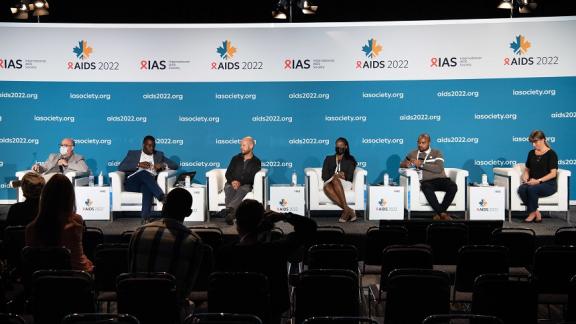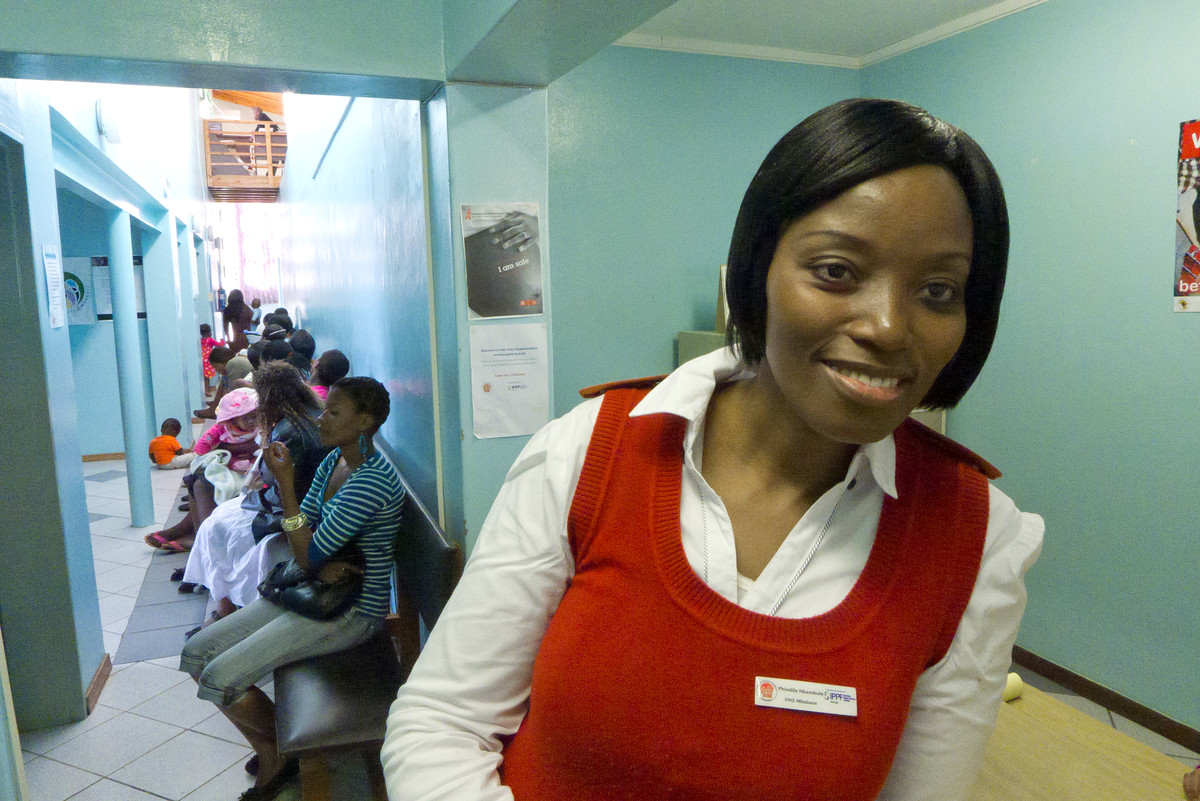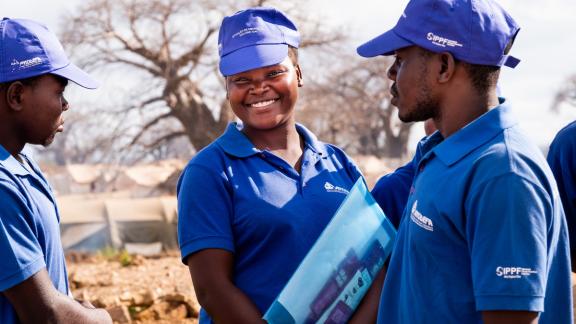By Mallah Tabot, Lead -Strategic Sexual Reproductive Health and Rights (SRHR) Programming and Innovation, IPPF Africa Region.
From 29 July to 2 August this year, thousands of activists, People Living with HIV, politicians, scientists, researchers, programmers, and a host of other actors engaged in the global AIDS response gathered in Montreal Canada for the 24th International AIDS Conference, dubbed AIDS2022. With the goal of coming together to re-engage and follow the science, participants converged to “define future research agendas, shift latest evidence to action, and chart a new consensus on overcoming the HIV epidemic as a threat to public health and individual well-being.”
There is however a never-ending debate and critique about the real impact of large conferences beyond speed dating and fancy hotels. For an event like the AIDS conference, the criticisms are even stronger, given the significant amounts of resources (both human, financial, and otherwise), year-long planning, logistics and many many, many flight tickets that go into a 4-day event.
I stand to challenge this perspective, because when it comes to the global AIDS response, regular convenings of key actors is an important investment with significant returns. Here are my four takeaways from AIDS 2022.
- Complacency is killing the AIDS response.
When it comes to global efforts invested over the past 40 years to end AIDS, remarkable progress has been made. Since its peak in 2004, AIDS-related deaths have plummeted by 64%. Anti-retroviral medication, once unattainable for those most affected, is now widely available globally for people living with HIV, especially the poorest and most marginalized. A 25-year-old diagnosed with AIDS in the 80s had a life expectancy of less than two years. Today, a person living with HIV can die in old age from causes unrelated to HIV/AIDS.
But the pandemic is far from over.
Last year alone, 1.5 million people were newly infected with HIV and 680 000 people died from AIDS-related illnesses. 25% of people living with HIV in Mozambique have abandoned Anti-Retroviral Therapy in the past two years according to their National AIDS Council. We are still far from developing an HIV prevention vaccine. Although research efforts are underway with investments in multiple approaches to produce a safe and effective preventive HIV vaccine, this reality remains elusive.
If complacency takes over, we will continue to see rising new HIV infections and more people will die from AIDS-related deaths. With dwindling resources and rising inequalities, this means we must be bold, wake up and redouble efforts to end AIDS by 2030. The AIDS conference keeps these conversations and commitments to ending AIDS alive.
- SRH and HIV integration is a key strategy for HIV prevention
For over a decade we have been speaking about the end of HIV as a vertical programme. From a health systems perspective however, Sexual and Reproductive Health and Rights services should be the starting point and a logical place to integrate HIV, especially HIV prevention. And yet, few bridges still span the gap between the two vertical programmes. People are falling through the cracks, resulting in stubbornly high HIV incidence rates, especially but not uniquely, among women and girls in Africa. The ECHO trials provide the most haunting evidence to date, of the collective failings of the SRHR and HIV community to span the divide.
People show up every day to clinics and hospital to access family planning services, then return a year later with a new HIV infection. This is unacceptable.
As Haruna Sunday, Executive Director of the Network of Adolescents and Youth Living with HIV aptly said, during a side event moderated by IPPF’s Global Youth Lead, Anita Nyanjong “we believe in evidence-based programming and services for young people in all their diversity and this must begin with a rigorous assessment of young people’s uptake of SRHR services.”
So, let’s also start from there; leveraging on SRHR platforms for HIV prevention. This was a key theme circulating around the AIDS 2022 with various partners sharing best practices and ways forward in institutionalizing this approach.
- We are failing young people
Six out of seven new HIV infections occur in adolescents. Every two minutes in 2021, an adolescent girl or young woman was newly infected with HIV. We are failing young people. The rising HIV infections and subsequent burden on young people means that stigma, in particular self-stigma is a major barrier to drug adherence. Things need to be done differently.
During a satellite session on Sexual and Reproductive Health and Rights, Young People and HIV: The need for a Comprehensive Response organized by IPPF, a key and resounding message came across clearly: Health policies must result in programs and services that are youth friendly and link Sexual and Reproductive Health and Rights services with those of HIV. Interventions should ensure access to factual and age-appropriate sexual and reproductive information and services; one which empowers them to avoid unplanned pregnancies and unsafe abortions, sexually transmitted infections, including HIV, and all forms of sexual and gender-based violence.
Most importantly, the consensus was that adolescents and young people living with HIV must be at the centre of the AIDS response. For this to happen, their needs, lived experiences, expertise and unique value must be harnessed. It means meaningfully engaging young people in scientific research and evidence generation on HIV. It means investing in peer-to peer mental health support programmes, to enable young people overcome stigma from living with HIV. It also means funding youth-led organizations with long-term, flexible, and sustainable funding. As was aptly depicted in a learning session organized by the Global Network of Young People Living with HIV (Y-Plus) at AIDS2022, a young person from Uganda reportedly lamented that the unique value and skills of young people are not respected. “They would rather pay other organizations to engage youth-led organizations…Give us the hundred thousand directly and monitor us and support our systems and structures and watch us grow”
It is by placing young people at the centre that we ensure we are stepping up to address both their physical and emotional well-being. By doing so, we’re also asserting their agency and stepping away from the toxic narrative that we’ve once been young, and as such know as much or even better than adolescents and young people themselves. Ensuring a significant ratio of representation of young people at the AIDS conference is a key marker for success.
- The AIDS response must be comprehensive and context specific
A comprehensive and multi-sectoral approach must continue to be employed if we are to end the AIDS pandemic. This means that while we focus on community-led approaches and the availability of safe, effective, and quality-assured medicines, these efforts should be concurrently paired with investments in new health prevention technologies, developing sustainable financing mechanisms for the AIDS response, targeting key at-risk populations as well as countering laws and policies that marginalize and criminalize people living with HIV. At the same time, determinants of health must be taken into account. Initiatives tackling HIV/AIDS should consider and seek to address the multiple intersectionalities that interplay with the lived realities and experiences of key populations, People Living with HIV, and marginalized people. These range from gender and sexual orientation to socio-economic status and disability.
In the same vein, partners should drop siloes approaches and come together to see the end of AIDS. Practically, this means scientists and researchers working together to share the evidence and latest innovations, community organizations and NGOs implementing multi-partner initiatives addressing diverse elements of the pandemic, activists collectively holding governments and other duty bearers to account, and donors pulling resources to address all the complex layers of a global AIDS response, while also ensuring a fully-funded UNAIDS which unites the efforts of 11 UN organizations in addressing HIV/AIDS.
Such a holistic approach is essential if we are serious about closing the gaps in access, as well as staying on track to end AIDS by 2030.
In conclusion
To reiterate. It’s not just another conference. This is the biggest gathering of policy makers, activists, researchers, scientists, People Living with HIV, programmers, governments, and young people all with the same vision; to see the end to AIDS. I hope we do in our lifetime, and that we all play our respective roles in getting us there.
 Mallah Tabot, Lead -Strategic Sexual Reproductive Health and Rights (SRHR) Programming and Innovation, IPPF Africa Region.
Mallah Tabot, Lead -Strategic Sexual Reproductive Health and Rights (SRHR) Programming and Innovation, IPPF Africa Region.
For more updates on our work, follow IPPF Africa Region on Facebook, Twitter, Instagram and You Tube.
when











